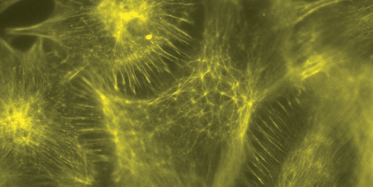One of the wonders of life is that all cells undergo continual turnover, and sustain their structure and function through continuous molecular self assembly. However, this dynamic renewal process is commonly viewed from the ‘bottom-up’, by focusing on the properties and interaction functions of individual molecular components. In reality, all cells form from other cells using preexisting structures, such as the cytoskeleton, as orienting scaffolds that guide replication and formation of new cellular components. In this article, we take a ‘top-down’ approach and describe how living cells may use hierarchical tensegrity principles to stabilize the shape and structure of their internal subcomponents at multiple size scales. We also explain how use of this form of architecture that depends on tensional prestress for shape stability could provide a mechanism to focus mechanical forces on the molecular components that comprise these structures, and thereby control their biochemical activities and self assembly behavior in living cells. In this manner, self assembly of load-bearing structures in cells proceeds in particular patterns that precisely match the forces they need to bear. This also explains how cells seamlessly integrate structure and function at all size scales, a process that is fundamental to all living materials.

You have access to this article
 Please wait while we load your content...
Something went wrong. Try again?
Please wait while we load your content...
Something went wrong. Try again?


 Please wait while we load your content...
Please wait while we load your content...